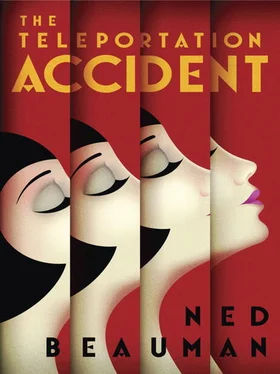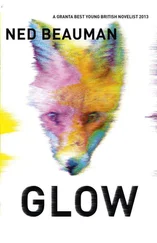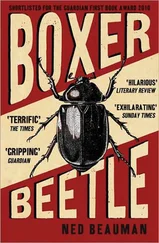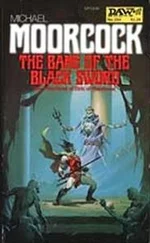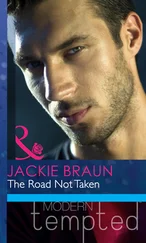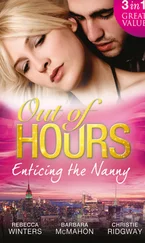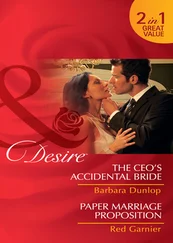In the years that followed, Loeser took strength thousands of times from the thought of Dieter Ziesel. At one point he considered commissioning a miniature portrait of Ziesel and keeping it in his wallet. When his great redeemer won a prestigious research fellowship it was a bit of a blow, but apparently a particular Professor had championed Ziesel’s cause to the selection committee, and that Professor was no doubt taking pity on the fellow, knowing that he would have no prospects in any other walk of life.
What Loeser found especially hilarious was that Ziesel still refused to accept his role. When he heard about a party thrown by people he knew, he always turned up, even though it must have been clear that nobody wanted him there. He had recently bought a suit in the gross American style that was now fashionable among the middlebrow public — huge shoulders, slim legs, leather belt — as if everyone would suddenly change their opinion about him as soon as they had a chance to admire this up-to-date garb. And, most absurd of all, he maintained his abusive relationship with Heijenhoort. The two had been good friends at university, but at some point Ziesel must have realised that his skinny classmate was the one person he could bully who was certain not to bully him back. This was because Heijenhoort — also a bit like Jesus, but in a less useful way — was basically the nicest man in the entire world. He wasn’t all that charming or funny, he was just nice. He had incomprehensible reserves of friendliness, optimism, self-effacement, generosity, and tact. A gang of dockers could kick him to mush in the street and even his death rattle would be polite. Ziesel was safe with Heijenhoort. So he made constant little jokes at Heijenhoort’s expense whenever he was in the presence of anyone who he thought might be impressed, hoping that it might at least infinitesimally elevate his social status, like a provincial civil servant writing to a minister about the incompetence of a colleague and expecting a promotion in return. But in fact it only had the effect of making Ziesel look like even more of a failure, since no sane person could possibly dislike Heijenhoort.
No sane person, that is, except Egon Loeser. To be that nice all the time, thought Loeser, just didn’t make sense. It was inhuman, illogical, saccharine, and cowardly. You couldn’t truly love anything if you didn’t hate at least something. Indeed, perhaps you couldn’t truly love anything if you didn’t hate almost everything. What, he wondered, would it actually mean to be ‘friends’ with Heijenhoort, knowing that Heijenhoort, the skimmed milk to Ziesel’s rancid butter, would bestow his insipid affection so indiscriminately? But even Achleitner said he didn’t mind Heijenhoort, so Loeser kept his contempt to himself.
Loeser introduced Rackenham to the two mismatched messiahs and then asked them how the party was. ‘Not very good,’ Ziesel replied. ‘There’s no corkscrew.’
‘What do you mean?’ said Achleitner.
‘No corkscrew,’ said Ziesel. ‘No one can open their wine. And there are no shops for miles.’
‘There must be two hundred people here. How can there not be one corkscrew?’
‘Hildkraut does have a penknife with a corkscrew attachment but he’s hiring it out and no one wants to pay,’ said Heijenhoort.
‘There have already been some casualties.’ Brogmann, apparently, had smashed his bottle on the wall to break off the neck and then tried to drink from what was left and cut his lip, while Tetzner had told Hannah Czenowitz that, given her curriculum vitae, she should have no trouble sucking out a cork, and she’d punched him in the eye.
‘This is ridiculous,’ said Achleitner.
‘Yes, it’s a disappointment, but at least Brecht is supposed to be coming later,’ said Ziesel.
‘If there’s not even any wine, thank God we found some coke,’ said Loeser. Then he felt a tap on his shoulder, and turned.
Achleitner had been right. Adele Hitler had changed.
The first thing Loeser noticed was her hair. It was hopelessly unfashionable. Where every single one of his female friends had a bob that looked like a geometric diagram of itself, often snipped so close at the back that in the morning there would be stubble at the nape, pale Adele wore a flock of black starlings, a drop of ink bursting in a glass of water, an avalanche of curls that could hardly be called a cut because if it were ever to come across a pair of scissors it would surely just swallow them up.
And where most 1931 frocks, like the medieval Greek merchant and geodesist Cosmas Indicopleustes, argued for flatness in the face of all available evidence, Adele had on a blue dress that wrote limericks about her bust and hips, no matter that her figure was actually pretty girlish — with a printed pattern of clouds, skyscrapers and biplanes that seemed to be the garment’s lone, almost touchingly clumsy, concession to the zeitgeist.
And then, above all, her eyes. She didn’t wear goggles of eyeshadow like the other girls did, just a little eyeliner and a little mascara, but both were quite redundant, since no artificial pigment could possibly augment what were not only the biggest and brightest and most tender eyes that Loeser had ever seen but also the most astonishingly baroque, with each iris showing a spray of gold around the pupil like the corona around an eclipse, within a dappled band of blue and green, within an outline of grey as distinct as a pencil mark, and then beyond that an expanse of moist white that did not betray even the faintest red vein but sheltered at its inner corner a perfect tear duct like a tiny pink sapphire. They were eyes that should have belonged to the frightened young of some rare Javanese loris.
Loeser could hardly believe that a beauty this intense had ever existed under all those layers of puppy fat — or not so much puppy fat, he recalled, as pony fat. He could hardly believe that lesson after lesson had seemed so tedious, that he had once felt positively unlucky to have been hired to teach this particular schoolgirl and not one of those schoolgirls one sometimes saw on the tram who had so much more … well, one shouldn’t dwell on that. He could hardly believe that he had been so ungrateful when right in front of him, hanging tightly on his every word, had been this revelation, his pupil in pupa. And he could hardly believe that his blinkered pursuit of modish girls like Marlene Schibelsky who knew how to dress and paint their face and cut their hair had just been rendered so utterly absurd.
He had never wanted to fuck anything so much in his life.
‘Herr Loeser,’ she said. ‘Do you remember me?’
He composed himself. ‘Adele Hitler! I certainly do. You’re looking … very well.’
‘Thank you. And I see you’ve smartened up. Do you know a lot of people here?’
‘Too many.’
‘Is it true Brecht is going to come?’
‘I’m afraid so.’
‘I’d love to meet him.’
‘You’d be disappointed. You’d see right through the man.’
‘How can you be so sure?’
‘Because of that exquisite critical eye that I remember so well from all our hours of Schiller.’ He remembered no such thing. ‘Unless those jealous Swiss matrons have quite gouged it out.’
Adele smiled. ‘Do you still teach, Herr Loeser?’
‘You can call me Egon now. And, no, I don’t teach any more. I’m in the theatre.’
‘Oh, I’m thrilled, I always thought you might become a playwright! I’ve been so desperate to meet some writers. You’re my first. Are you even bolder than Brecht?’
There was almost no component of his self-respect that Loeser wasn’t occasionally willing to leave at the pawnbrokers, but he did have one rule: he wouldn’t falsify himself to please. No one was worth that. The world could take him as he was. So although it would have been very easy to skate along with Adele’s assumption, he had no choice but to correct her. ‘I’m not a writer, actually. I’m a set designer.’
Читать дальше
